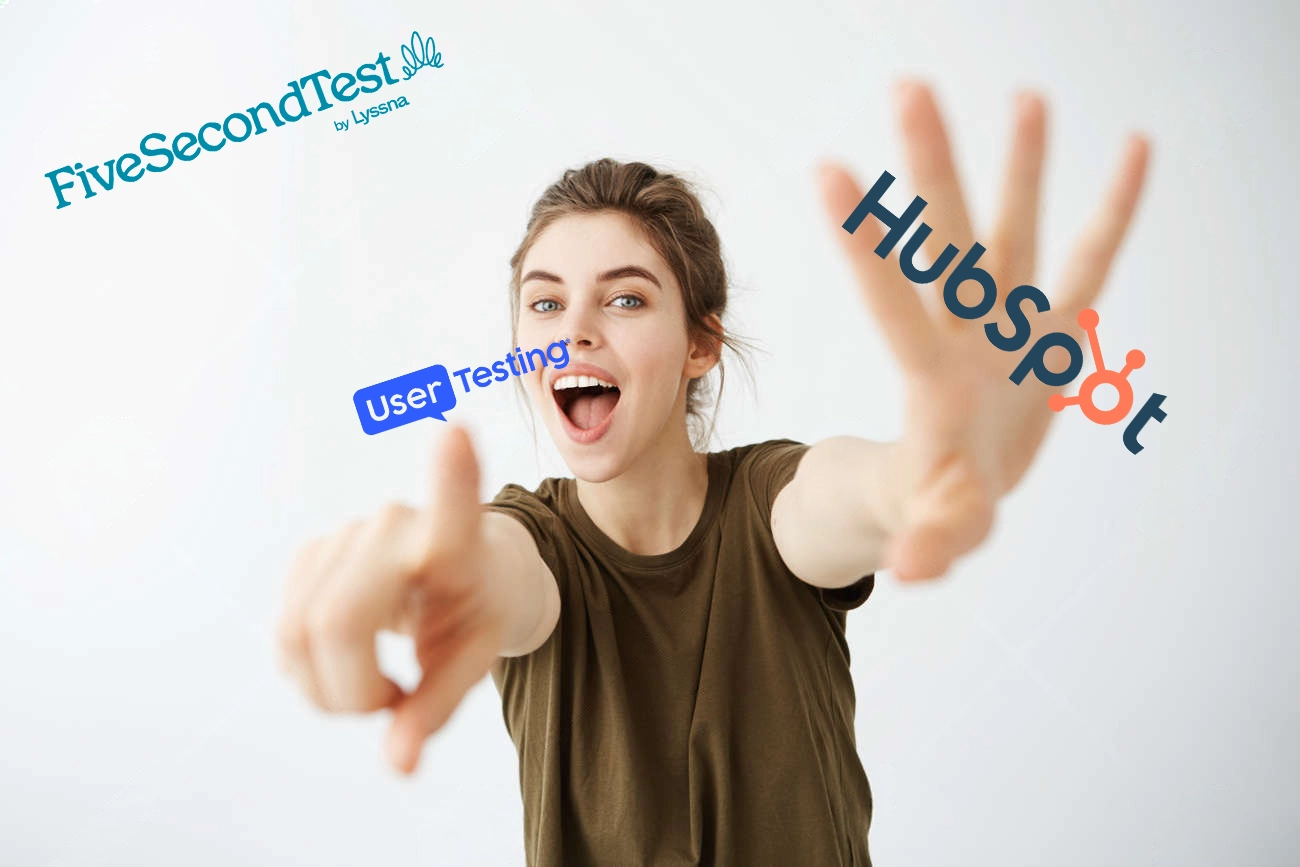Unlocking Marketing Success With the Right Metrics
In the fast-paced world of digital marketing, algorithms and trends are constantly in flux. Simply launching campaigns isn't enough. Understanding campaign performance is key to unlocking true marketing success and maximizing your return on investment (ROI).
Marketing performance measurement has evolved drastically. We've moved from the guesswork of estimated reach to today's granular data analysis. This shift has transformed how we understand and optimize our marketing efforts. What was once an art is now a science, driven by data and fueled by insights.
Effective marketing hinges on measuring what matters. Vanity metrics no longer suffice; we need tangible proof of engagement, conversions, and ultimately, business growth. Using the right performance indicators empowers you to analyze campaign effectiveness, identify areas for improvement, and make informed decisions that drive results. Knowing which metrics to track, and how to interpret them, is crucial for achieving your marketing objectives.
Essential Marketing Performance Indicators for 2025
This list will explore 10 essential marketing performance indicators you need to monitor in 2025. Whether you're a seasoned marketing professional, an entrepreneur launching a new venture, a social media expert, or an e-commerce store owner, understanding these metrics will allow you to refine strategies, optimize campaigns, and achieve greater success. Let's dive into the world of data-driven marketing and explore the metrics that matter.
Return on Investment (ROI)
Return on Investment (ROI) is a fundamental metric in marketing. It connects marketing spending with financial outcomes, showing how profitable your marketing efforts are. Essentially, ROI measures the efficiency of your marketing budget, revealing if your campaigns are generating enough profit compared to their cost. It's a core component of data-driven decision-making.

Key Features and Benefits
- Expressed as a Percentage or Ratio: ROI is usually shown as a percentage (like 150%) or a ratio (like 3:1). Higher values mean a more profitable investment.
- Calculation: The basic formula is (Net Profit / Cost of Investment) × 100.
- Versatility: You can use ROI to analyze individual campaigns (such as email marketing or social media advertising) or your entire marketing strategy.
- Time-Based Measurement: Track ROI over different time frames (quarterly, annually) to identify performance trends.
Pros of Using ROI
- Clear Financial Justification: ROI offers hard data to support marketing budgets and prove their impact on profits.
- Easy to Understand: It's a simple metric that everyone, from marketing teams to executives, can grasp.
- Prioritization: ROI helps prioritize marketing activities by showing which ones deliver the best financial returns.
- Universality: It's a standard performance benchmark, applicable across all industries and business models.
Cons of Using ROI
- Attribution Challenges: It can be difficult to accurately link all revenue to specific marketing actions, especially with multi-channel campaigns.
- Long-Term Impact: ROI often emphasizes short-term gains and may not fully reflect the long-term brand-building impact of marketing.
- Calculation Inconsistencies: Different calculation methods can produce different ROI results, making comparisons difficult.
- Oversimplification: While valuable, ROI can sometimes oversimplify the complex effects of marketing.
Real-World Examples
- Coca-Cola: Coca-Cola uses ROI to evaluate the performance of its advertising campaigns across different channels, optimizing its spending for maximum results.
- HubSpot: HubSpot reportedly achieved a 9:1 ROI by focusing on inbound and content marketing, demonstrating the potential of targeted, value-driven approaches.
- Procter & Gamble: After ROI analysis showed better returns from digital marketing, Procter & Gamble shifted a large portion of its budget online.
Tips for Effective Implementation
- Define Parameters: Clearly define what counts as "investment" (ad spend, salaries) and "return" (revenue, leads) for consistent measurement.
- Consistent Calculation: Use the same calculation method across all campaigns to ensure accurate tracking and valid comparisons.
- Short-Term and Long-Term View: Analyze both short-term and long-term ROI to get a complete picture of marketing effectiveness.
- Attribution Models: Use attribution models to better link marketing activities to sales and revenue. You might be interested in: Our guide on…
Historical Context
Influential figures like Peter Drucker and Philip Kotler have championed the concept of ROI. Marketing Management Analytics also played a key role in promoting its use in marketing performance measurement.
By understanding and using ROI effectively, businesses can make data-driven decisions, optimize their marketing spending, and achieve better returns.
Understanding Customer Acquisition Cost (CAC)
Customer Acquisition Cost (CAC) is a vital marketing metric. It measures the total cost of acquiring a new customer. This includes all marketing and sales expenses. Think advertising campaigns, content creation, sales team salaries, and software subscriptions.
Understanding your CAC is essential. It helps evaluate marketing strategy effectiveness and the sustainability of business growth. CAC provides a clear picture of your investment per new customer. This allows for informed decisions about resource allocation and future plans.

Calculating and Using CAC
CAC is calculated by dividing total acquisition costs by the number of new customers acquired within a specific period. This simple calculation offers powerful insights. You can segment CAC by marketing channel (e.g., social media, email, paid search with Google Ads), customer segment, or product line. This granular view helps understand which strategies effectively acquire specific customer types.
CAC is often paired with Customer Lifetime Value (CLTV). This assesses the overall health and sustainability of a business model. A healthy business typically maintains a CLTV significantly higher than its CAC. This indicates that customer value outweighs acquisition cost. This pairing is key for unit economics calculations, helping project profitability and growth. See our sitemap for more resources.
Pros of Tracking CAC
- Insight into Marketing Efficiency: Understanding the cost of each acquisition identifies areas for optimization.
- Optimized Marketing Spend: Knowing which channels yield the lowest CAC enables strategic budget allocation and maximizes ROI.
- Critical for Startups and SaaS: CAC is key for demonstrating viability and attracting investment.
- Identifies Cost-Effective Strategies: Analyzing CAC across different channels and campaigns pinpoints successful strategies.
Cons of Relying Solely on CAC
- Difficulty Allocating Costs: Accurately attributing costs across multiple customer touchpoints can be complex.
- Multi-Touch Attribution Complexities: Customers may interact with multiple channels before converting, making attribution challenging.
- Doesn't Reflect Customer Quality: CAC shows acquisition cost but not the customer's long-term value or profitability.
- Fluctuations Due to External Factors: Seasonal factors or market changes can impact CAC, requiring ongoing monitoring and adjustments.
Real-World Examples of CAC in Action
- Spotify: Referral programs and optimized algorithmic targeting helped Spotify reduce its CAC by 30%.
- Dropbox: Their viral referral program, offering free storage, significantly lowered their CAC and fueled growth.
- Salesforce: By monitoring CAC by channel, Salesforce found that community events produced the lowest CAC customers.
Tips for Implementing CAC Tracking
- Segment CAC Calculation: Identify profitable customer groups and tailor marketing accordingly.
- Track CAC Trends: Monitoring CAC changes identifies efficiency improvements or potential problems.
- Include All Relevant Costs: Factor in all acquisition costs, including advertising, salaries, tools, and commissions.
- Compare to Industry Benchmarks: This provides context and helps assess performance relative to competitors.
The Growth of CAC as a Key Metric
The importance of CAC was popularized by figures like David Skok (venture capitalist) and Andrew Chen (Andreessen Horowitz partner). SaaS companies like HubSpot and Salesforce solidified its status as a standard metric. This focus on CAC reflects a broader shift towards data-driven marketing and measurable results.
Customer Lifetime Value (CLV/LTV)

Customer Lifetime Value (CLV or LTV) is a critical metric for any business. It helps you understand and optimize long-term profitability by measuring the total revenue expected from a single customer account throughout your entire relationship with them. CLV encourages a forward-thinking approach. Instead of focusing on immediate sales, it predicts the net profit from the entire future relationship. This makes it an essential marketing performance indicator.
Understanding CLV and Its Importance
CLV helps businesses understand how much they can spend on acquiring new customers and still remain profitable. Knowing a customer's potential long-term value empowers informed decisions about marketing budgets, sales strategies, and customer service investments. It goes beyond the initial acquisition cost and focuses on the overall return on that investment.
Key Features and Calculation
There are various ways to calculate CLV, ranging from simple to more complex methods:
- Basic Calculation: This simplified method multiplies purchase frequency, average order value, and customer lifespan.
- Advanced Models: These incorporate more data points like retention rates, profit margins, and discount rates, leading to a more accurate prediction.
- Historical vs. Predictive: CLV can be calculated based on past customer behavior (historical CLV) or by projecting future value (predictive CLV).
- Segmentation: Segmenting CLV by customer cohorts (e.g., acquired through social media vs. email) or demographics reveals which customer segments are most valuable.
Pros of Using CLV
- Long-Term Perspective: CLV shifts the focus from short-term gains to sustainable, long-term profitability.
- Acquisition Spending Guidance: Understanding CLV helps determine an appropriate Customer Acquisition Cost (CAC) and achieve a healthy LTV:CAC ratio.
- Targeted Marketing: CLV identifies high-value customer segments, enabling more personalized and effective marketing efforts.
- Retention Justification: The metric provides data-driven justification for investments in customer retention and loyalty programs.
Cons of Using CLV
- Reliance on Assumptions: CLV calculations rely on assumptions about future customer behavior, which can be unpredictable.
- Complexity: Accurate CLV calculations can be complex, particularly for newer businesses with limited historical data.
- Changing Customer Behavior: Predictive models can become inaccurate if customer behavior patterns shift unexpectedly.
- Time Value of Money: Basic CLV models may not consider the decreasing value of money over time, making discounting crucial for accurate long-term projections.
Real-World Examples
- Amazon Prime: Amazon Prime members typically have a much higher LTV than non-Prime members. This justifies Amazon's investment in premium services and higher acquisition costs.
- Starbucks Rewards: The Starbucks Rewards program, with its personalized mobile app engagement, has demonstrably increased CLV by 5-8% through fostering customer loyalty and boosting purchase frequency.
- Netflix: Netflix uses CLV models to determine content acquisition budgets, tailoring their offerings to maximize value across diverse viewer segments.
Practical Tips for Implementation
- Start Simple: Begin with a basic CLV calculation and gradually add more complex variables as your data grows.
- Regular Updates: Keep CLV calculations up-to-date to reflect changes in customer behavior and market conditions.
- Segment by Acquisition Channel: Analyze CLV by acquisition channel to optimize marketing spend and resource allocation.
- Target a 3:1 LTV:CAC Ratio: A 3:1 LTV:CAC ratio is generally recommended as a healthy benchmark for sustainable growth.
Evolution and Popularization
The increasing prominence of CLV can be attributed to the work of figures like Peter Fader, a Wharton professor specializing in customer lifetime value modeling, and marketing pioneers Don Peppers and Martha Rogers, champions of one-to-one marketing. Influential publications like the Harvard Business Review have further highlighted the importance of CLV for business success. As data analytics capabilities have improved, businesses are now much better equipped to calculate and leverage CLV effectively.
Conversion Rate: The Heartbeat of Your Marketing
Conversion rate is the lifeblood of any marketing campaign. It measures the percentage of visitors who complete a desired action, whether it's buying a product, subscribing to a newsletter, or downloading a resource. This vital metric reveals how effectively your marketing transforms potential customers into paying ones, guiding them through the sales funnel. Understanding and optimizing your conversion rate is crucial for maximizing your marketing ROI.
Conversion rate is calculated as (Number of Conversions / Total Visitors) × 100. This straightforward formula applies to various stages of the customer journey, tracking progress from initial awareness to final purchase. It works across multiple channels, including websites, landing pages, email campaigns, and social media ads. For deeper insights, marketers often segment conversion rate data by traffic source (like organic search or paid advertising), device type (desktop or mobile), or customer demographics.
The Power of Optimization
The impact of conversion rate optimization is undeniable. Booking.com runs over 25,000 A/B tests annually to fine-tune their conversion rates. Shopify saw an 18% increase in checkout conversion through a redesigned mobile checkout process. Airbnb boosted its conversion rates by an impressive 30% by implementing verified listing photography. These examples demonstrate how small improvements can translate into significant revenue gains.
Pros of Tracking Conversion Rate
- Direct Measurement of Effectiveness: See how well your marketing generates desired results.
- Focused Optimization: Provides a clear target for improvement.
- Performance Identification: Pinpoints underperforming channels or campaigns.
- High ROI Potential: Small increases can yield substantial revenue growth.
Cons of Relying Solely on Conversion Rate
- Short-Term Focus: Overemphasis on conversions can overshadow building long-term customer relationships.
- Unequal Weighting: Different conversion types have varying business impact, yet might be measured equally.
- Benchmarking Challenges: Industry averages vary widely, making comparisons difficult.
- Quality Over Quantity: May not account for the quality of conversions (e.g., a high volume of low-value leads).
Tips for Improving Conversion Rates
- Track Micro and Macro Conversions: Monitor smaller actions leading to the primary goal to identify friction points.
- A/B Test Continuously: Test different variations of website elements, ad copy, and email subject lines.
- Segment Your Data: Analyze conversion data by traffic source, device, and customer demographics to tailor your strategies.
- Optimize Page Load Speed: A slow website can negatively impact conversions.
Conversion rate is a critical marketing performance indicator, directly linking marketing activities to business outcomes. Experts like Bryan Eisenberg, platforms like Google Analytics, and consultancies like Conversion Rate Experts have championed conversion rate optimization, making it accessible to businesses of all sizes. You might be interested in: Our Sitemap for more resources.
Click-Through Rate: A Vital Metric For Online Success
Click-Through Rate (CTR) measures how many people click a link compared to how many see it. It's a key indicator of your content's effectiveness, whether it's in an email, an ad, or organic search results. It's a crucial part of any marketing performance analysis.
CTR is calculated as (Number of Clicks / Number of Impressions) × 100. This simple formula provides real-time performance data. However, CTRs can differ based on the platform (email, social media, search), industry, and content type. CTR is especially important for search engines and Pay-Per-Click (PPC) advertising.
Benefits of Monitoring CTR
-
Instant Feedback: CTR gives immediate insights into how well your creative and messaging perform. A low CTR might suggest you need to tweak your headline, images, or call to action.
-
Budget Optimization: By analyzing CTR, you can pinpoint high-performing content, refine your ad targeting, and spend your budget wisely.
-
Quality Score: For Google Ads, CTR is a major factor in Quality Score. This score impacts ad costs and placement. A higher CTR often means lower costs and better visibility.
-
Easy Measurement: CTR is easy to measure and understand across different platforms, giving you a consistent performance benchmark.
Weighing the Pros and Cons of CTR
Pros:
- Immediate feedback on creative and messaging
- Optimized ad spending
- Influences Google Ads Quality Score
- Simple to measure
Cons:
- High CTR doesn't guarantee conversions
- Can encourage clickbait
- Industry benchmarks vary widely
- Potential for click fraud
CTR in Action: Real-World Examples
- Google Search Ads: Average CTR is 4-6%, with finance reaching 7% or higher.
- Email Marketing: Average CTR hovers around 2.5% (reported by MailChimp).
- Facebook Ad Optimization: Case studies show how better targeting can reduce ad inventory while increasing CTR.
Boosting Your CTR: Actionable Tips
- A/B Testing: Experiment with different headlines, visuals, and call-to-action text.
- Audience Segmentation: Tailor your message for specific groups based on their demographics and behavior.
- Focus on Conversions: Prioritize conversion quality over chasing high CTRs with clickbait.
- Heat Maps: Use heat maps to see which website elements attract the most clicks and optimize accordingly. Check out Our Sitemap for related resources.
The Rise of CTR in Digital Marketing
Google AdWords (now Google Ads) cemented CTR's role in online advertising. Marketing influencers like Seth Godin, with his focus on permission marketing, emphasized earning clicks. DoubleClick also played a role in standardizing CTR measurement.
CTR's continued relevance shows how important user engagement is in the digital world. It remains a vital tool for marketers looking to understand and improve their online performance.
Customer Churn Rate

Customer churn rate is a crucial metric. It shows the percentage of customers who stop using a company's products or services within a given time. This is especially important for subscription-based businesses. Churn directly impacts revenue stability, growth potential, and customer lifetime value (CLTV). Managing churn is key for any sustainable, profitable business.
Calculating and Analyzing Churn
The basic churn rate formula is straightforward: (Customers Lost in Period / Total Customers at Start of Period) × 100. The time period can be monthly, quarterly, or annually. This depends on the specific business model and sales cycle. For a deeper dive, businesses often analyze churn by cohort, customer segment, or acquisition channel. Remember, churn rate and customer retention rate are inversely related. A high churn rate means a low retention rate, and vice versa.
The Value of Monitoring Churn
Why is churn rate so important? It acts as an early warning system. A rising churn rate can indicate problems with customer satisfaction, product usability, or even larger market trends. Early identification allows businesses to take action. Churn rate also helps forecast revenue and identify growth challenges. By understanding at-risk customer segments, businesses can tailor retention strategies and improve overall customer relationships.
Pros of Monitoring Churn Rate
- Early Warning Indicator: Provides insights into potential customer satisfaction issues, enabling proactive solutions.
- Revenue Forecasting: Allows businesses to predict revenue stability and identify potential growth obstacles.
- Segmentation Insights: Identifies at-risk customer groups for targeted retention efforts.
- Relationship Health: Gives a clear overview of the health of customer relationships.
Cons of Relying Solely on Churn Rate
- Value Differentiation: Without proper segmentation, churn rate doesn't distinguish between high-value and low-value customers.
- Seasonality: Can obscure underlying seasonal patterns if not analyzed carefully.
- Partial Churn: May not capture partial churn, like downgraded subscriptions.
- Lagging Indicator: Shows problems after they occur, making immediate recovery difficult.
Real-World Examples of Churn Management
- Netflix: Maintains impressively low churn rates (around 2-3% monthly) with strong content and personalized recommendations.
- Spotify: Successfully reduced churn by 20% by introducing family plans and personalized playlists.
- American Express: Lowered churn by analyzing transaction patterns to identify and support at-risk customers.
Practical Tips for Implementing Churn Analysis
- Exit Surveys: Use exit surveys to understand why customers leave.
- Gross vs. Net Churn: Track both gross churn (all lost customers) and net churn (accounting for expansions and upgrades).
- Early Warning Systems: Develop systems based on usage patterns and engagement to identify at-risk customers.
- Customer Health Scores: Create scores combining multiple indicators like product usage and support interactions.
Rise in Popularity of Churn Rate as a Key Metric
Churn rate gained significant attention with the growth of the SaaS industry and the subscription economy. Companies like Salesforce and HubSpot emphasized customer retention. The rise of Customer Success as a dedicated function further cemented churn's importance. Gainsight is an example of a company specializing in this area. Thought leaders like Tien Tzuo, founder of Zuora and a prominent voice in the Subscription Economy, have also championed churn as a key metric. Focusing on reducing churn and increasing customer lifetime value drives long-term, sustainable business growth.
Net Promoter Score (NPS): Understanding Customer Loyalty
Net Promoter Score (NPS) is a widely recognized metric used to measure customer loyalty and satisfaction. Its simplicity and proven correlation with business growth make it an essential tool for marketers. By asking the single question, "How likely are you to recommend our company/product/service to a friend or colleague?" on a scale of 0-10, NPS offers valuable insight into customer sentiment. This seemingly simple question can be a powerful predictor of future business performance.
How NPS Works
Customers are categorized into three groups based on their responses:
- Promoters (9-10): These are your loyal enthusiasts, the customers who are most likely to fuel organic growth through word-of-mouth referrals.
- Passives (7-8): Passives are satisfied but not overly enthusiastic. They present a risk as they could be swayed by competitive offerings.
- Detractors (0-6): Unhappy customers are classified as detractors. They pose a threat to your brand reputation through negative feedback.
The NPS score is calculated by subtracting the percentage of Detractors from the percentage of Promoters. The resulting score ranges from -100 (all detractors) to +100 (all promoters).
Features and Benefits of Using NPS
- Simplicity: NPS is easy to understand and implement across all levels of an organization, fostering alignment on customer experience goals.
- Predictive Power: It demonstrates a strong correlation with revenue growth across various industries, serving as a valuable indicator of future performance.
- Actionable Insights: When combined with follow-up questions exploring the reasoning behind the score, NPS offers rich qualitative data that can be used for improvement.
- Benchmarking: NPS allows for comparisons across products, teams, and even competitors within the same industry.
Pros and Cons of NPS
| Pros | Cons |
|---|---|
| Simple to implement and understand | Oversimplifies complex customer relationships |
| Correlates with revenue growth | Cultural differences can influence scores |
| Actionable feedback with qualitative data | May not pinpoint specific product issues |
| Comparable across products and companies | Benchmarking only valid within same industry |
Real-World Examples of NPS Success
- Apple: Known for its product innovation and cohesive ecosystem, Apple maintains impressively high NPS scores, typically in the 70-80 range.
- USAA (Financial Services): USAA consistently achieves NPS scores above 80 by prioritizing exceptional customer service.
- JetBlue: JetBlue demonstrated the impact of addressing customer pain points by improving its NPS by 15 points after implementing a comprehensive service recovery program.
The Rise of NPS to Prominence
The Net Promoter System, co-developed by Satmetrix, was popularized by Fred Reichheld, a consultant at Bain & Company. The Harvard Business Review article "The One Number You Need to Grow" further amplified its adoption as a key performance indicator.
Tips for Effective NPS Implementation
- Ask "Why?": Always follow up the initial rating question with an open-ended "why" to understand the reasoning behind the score.
- Closed-Loop Feedback: Establish processes to address negative feedback from detractors and strive to convert them into promoters.
- Consistent Touchpoints: Survey customers at regular intervals throughout their journey to track progress and identify areas for improvement.
- Share Widely: Distribute NPS data throughout your organization to promote alignment and cultivate a customer-centric culture.
By understanding the nuances of NPS and implementing it strategically, businesses can gain invaluable insights into customer loyalty, drive growth, and build stronger customer relationships.
Customer Engagement Rate: Building Strong Customer Relationships
Customer Engagement Rate (CER) dives deep into how customers interact with your brand. It goes beyond simple transactions and focuses on the quality of those interactions. This gives you a much better understanding of your customer relationships, revealing how strong their connection is and their potential to stick around. This makes CER a vital marketing performance indicator for any business wanting to foster lasting customer relationships. Instead of just asking, "Did they buy?", CER asks, "How involved are they?".
What Is Customer Engagement Rate?
CER measures how actively customers engage with your brand across different touchpoints. These touchpoints could include website visits, app usage, social media interactions (likes, comments, shares), email opens and clicks, content consumption, and even product usage data. It gives you a complete overview of customer activity, providing a more detailed understanding than conversion rates alone.
Features and Benefits of Using CER
-
Composite Score: CER combines multiple interaction metrics into a single, easy-to-understand score, giving you a comprehensive view of engagement.
-
Customization: You can tailor CER to your specific business and the touchpoints most important to your customer journey. For a SaaS company, product usage might be heavily weighted, while for an e-commerce store, email opens and website visits might be more critical.
-
Weighted Interactions: Assign different weights to various actions based on their importance. A purchase should likely carry more weight than a simple website visit.
-
Trend Tracking: Monitor CER over time to spot trends and patterns in customer engagement. This helps you understand the impact of your marketing campaigns and identify areas for improvement.
Pros of Using CER
-
Deeper Understanding: CER gives you a more nuanced understanding of customer relationships than just looking at transactional metrics.
-
Predictive Power: High engagement often means increased customer loyalty, advocacy, and lifetime value.
-
Opportunity Identification: CER can highlight areas where you can build stronger customer connections and improve the customer experience.
-
Leading Indicator: CER acts as a leading indicator for customer retention and long-term value.
Cons of Using CER
-
No Standard Calculation: There's no single formula for calculating CER, making comparisons across different industries tricky.
-
Complexity: Implementing and understanding CER can be complex, requiring careful consideration of which metrics to include and how to weight them.
-
Vanity Metrics: If you're not careful, CER can include vanity metrics that don't actually reflect genuine engagement.
-
Benchmarking Challenges: Comparing your CER with competitors is difficult because of the lack of standardization.
Real-World Examples of High CER
-
Duolingo: The Duolingo language learning app maintains high daily engagement (reportedly around 85%) through gamification like streaks and leaderboards. These features keep users motivated and coming back for more.
-
Strava: The Strava fitness tracking app boosted user engagement by 40% by introducing community challenges and leaderboards. This fostered a sense of competition and camaraderie among users.
-
Peloton: Peloton maintains industry-leading engagement through strong instructor relationships and a vibrant online community. This has created a loyal following that goes beyond simply using the product.
Tips for Implementing CER
-
Define Engagement: Clearly define what counts as meaningful engagement for your business and customer journey.
-
Weight Actions: Give different weights to engagement actions based on how much they correlate with customer value.
-
Segment Analysis: Track engagement patterns by customer segment to identify differences and tailor your marketing.
-
Trigger Actions: Use engagement scoring to trigger specific marketing actions, like sending personalized emails or targeted offers.
The Evolution and Growing Importance of CER
The concept of customer engagement has been heavily influenced by digital analysts like Brian Solis, who highlighted the importance of building online relationships. Social media platforms have also made engagement metrics more popular, turning them into mainstream marketing KPIs. Organizations like Forrester, with their Customer Engagement Index, have also helped formalize engagement measurement.
By focusing on Customer Engagement Rate, you're not just measuring transactions; you're measuring how strong your customer relationships really are. This focus on quality makes CER a powerful tool for building a thriving, loyal customer base.
Marketing Qualified Leads (MQLs)
Marketing Qualified Leads (MQLs) are a critical stage in the sales process, connecting marketing activities with sales conversions. These are potential customers who have shown more engagement and interest than other leads, suggesting they are more likely to become paying customers. Understanding and using MQLs effectively is essential for maximizing marketing ROI and driving revenue growth.
What Makes a Lead "Marketing Qualified"?
MQLs are defined by specific criteria determined through lead scoring models. These models combine demographic information (like industry, job title, and company size) with behavioral factors (such as website visits, content downloads, email opens, and webinar attendance). This method allows marketers to go beyond simply capturing leads and focus on identifying those demonstrating real buying intent. MQLs are tracked both as absolute numbers and as a percentage of total leads, providing valuable data about marketing effectiveness. They are also often segmented by channel, campaign, or lead source to identify high-performing initiatives.
Why MQLs Matter
MQLs are key to measuring marketing's contribution to the sales pipeline. By concentrating on qualified leads, marketing and sales teams can prioritize quality over quantity. This results in increased sales efficiency and a more streamlined sales process. Focusing on higher-potential prospects allows sales teams to use their time effectively, pursuing leads with the greatest chance of conversion. Tracking MQLs also provides a clear feedback loop for assessing marketing campaign performance and optimizing marketing budgets towards the most effective lead sources.
Pros of Focusing on MQLs
- Improved Sales Alignment: Promotes collaboration and shared objectives between marketing and sales.
- Enhanced Sales Efficiency: Focuses sales follow-up on high-potential prospects.
- Clear Performance Insights: Offers valuable data on marketing campaign effectiveness.
- Optimized Budget Allocation: Directs resources to the most productive lead generation channels.
Cons of Focusing on MQLs
- Constant Refinement: Qualification criteria need regular updates based on performance data.
- Potential for Disagreements: Poorly defined MQLs can lead to conflict between marketing and sales.
- Industry Differences: Qualification standards vary across industries and product types.
- Missed Opportunities: Overly strict criteria can exclude unconventional but potentially valuable prospects.
Real-World Examples
- HubSpot: Improved MQL-to-customer conversion rates by 25% after using behavioral scoring.
- Marketo: Refined their MQL definition to include product usage data, increasing sales conversion by 30%.
- IBM: Uses AI-driven lead scoring to identify MQLs with 85% greater accuracy than traditional methods.
Tips for Implementing MQLs
- Collaborative Definition: Define MQL criteria jointly between marketing and sales teams.
- Regular Review and Adjustment: Continuously review conversion data and modify MQL definitions.
- Lead Nurturing Programs: Develop programs to nurture leads that don't yet qualify as MQLs.
- Key Metric Tracking: Monitor MQL-to-opportunity and MQL-to-customer conversion rates for each lead source.
The Evolution of MQLs
The MQL concept was popularized by SiriusDecisions, a research firm that formalized the lead qualification framework. Marketing automation platforms like Eloqua, Marketo, and HubSpot further reinforced the importance of MQLs by offering tools for lead scoring and tracking. Jon Miller, co-founder of Marketo, also played a major role in promoting lead scoring techniques.
Why MQLs Are Essential
In a data-driven marketing environment, MQLs are a crucial metric for understanding and improving marketing performance. They provide a clear connection between marketing efforts and revenue generation, allowing businesses to target their activities efficiently and maximize ROI. By focusing on MQLs, businesses can shift from superficial metrics and concentrate on achieving tangible results.
Cost Per Lead (CPL): A Key Marketing Metric
Cost Per Lead (CPL) is a vital marketing performance indicator. It measures how effectively your campaigns generate potential customers. By understanding how much you spend to acquire each lead, you can make data-driven decisions. This optimizes your marketing budget and maximizes Return on Investment (ROI). Its focus on cost-effectiveness makes it an essential marketing metric.
How CPL Works
Calculating CPL involves dividing the total marketing campaign cost by the number of leads generated:
CPL = (Total Campaign Cost / Number of Leads Generated)
This simple formula applies to individual channels (like social media), specific campaigns, or even set time periods. This granular approach offers valuable performance insights.
Benefits of Tracking CPL
- Channel-Specific Measurement: Analyze CPL for individual channels like Facebook Ads, Google Ads, or email marketing. This pinpoints the most cost-effective lead generation avenues.
- Campaign Optimization: Track CPL for each campaign to understand effective strategies. See which messages best resonate with your audience and generate leads at the lowest cost.
- Budget Allocation: CPL data informs budget allocation decisions. Shift resources towards the highest ROI channels and campaigns.
- CAC Analysis: CPL is crucial for calculating Customer Acquisition Cost (CAC). It provides a foundational understanding of new customer acquisition costs.
Pros of Using CPL
- Clear Cost Efficiency: Directly measures how efficiently marketing generates leads.
- Channel Comparison: Easily compare the cost-effectiveness of different lead generation channels.
- Easy to Understand: Simple calculation and interpretation across departments.
- Performance-Based Optimization: Enables data-driven marketing spend optimization for maximum ROI.
Cons of Relying Solely on CPL
- Lead Quality: CPL alone doesn't reflect lead quality. Consider metrics like conversion rates and deal size for a complete picture.
- Volume over Quality: Focusing only on minimizing CPL can encourage pursuing high lead volume, sacrificing quality.
- Market Fluctuations: CPL can fluctuate due to seasonality and changing market conditions.
- Inconsistent Lead Definitions: Different lead definitions across channels can skew comparisons.
Real-World Examples of CPL Success
- HubSpot: Reportedly reduced CPL by 60% by shifting budget from traditional to inbound marketing.
- Salesforce: Identified webinars as their lowest CPL channel for generating enterprise leads at scale.
- Zoom: Achieved 40% lower CPL through optimized content marketing compared to paid search.
Tips for Implementing CPL Tracking
- Track Alongside Quality Metrics: Monitor CPL with lead quality metrics, like conversion rates, deal size, and sales qualified leads.
- Segmented CPL Targets: Establish varying CPL targets for different market segments based on lifetime value.
- Blended CPL: Calculate a blended CPL across all channels to assess overall marketing efficiency.
- Consistent Lead Tracking: Implement consistent lead tracking across all channels for accurate comparisons and analysis.
The Rise of CPL in Digital Marketing
CPL gained popularity alongside digital and performance marketing metrics. Platforms like Google Ads, with sophisticated conversion tracking, played a significant role. Lead generation agencies and consultancies further boosted its widespread adoption.
Conclusion: The Importance of CPL
By diligently tracking and analyzing CPL, marketers gain valuable insights. This allows for campaign performance analysis, budget optimization, and ultimately, more efficient lead generation. CPL is an indispensable metric for any growth and profitability-focused business.
10-Point Marketing Performance Matrix
| Metric | Implementation Complexity 🔄 | Resource Requirements ⚡ | Expected Outcomes 📊 | Ideal Use Cases 💡 | Key Advantages ⭐ |
|---|---|---|---|---|---|
| Return on Investment (ROI) | Medium – requires financial data and attribution | Low/Medium – basic financial analytics | Provides overall profitability assessment | Evaluating overall marketing strategy | Universal, clear cross-department communication |
| Customer Acquisition Cost (CAC) | Medium – integration of cost data from multiple sources | Medium – requires detailed expense tracking | Quantifies cost efficiency of acquiring new customers | Startups, SaaS, segmented channel analysis | Offers clear insight into marketing efficiency |
| Customer Lifetime Value (CLV/LTV) | High – involves predictive modeling and multiple variables | High – needs comprehensive customer behavior data | Estimates long-term revenue potential per customer | Customer segmentation, retention strategy planning | Informs sustainable acquisition and investment decisions |
| Conversion Rate | Low – straightforward tracking and percentage calculation | Low – basic digital analytics tools | Measures effectiveness of converting leads into customers | Website performance, campaign optimization | Immediate feedback on marketing performance |
| Click-Through Rate (CTR) | Low – simple metric provided by digital platforms | Low – available via ad platform analytics | Indicates immediate appeal and engagement of content | Digital ads, email, and social media campaigns | Quick and accessible measure of creative and messaging impact |
| Customer Churn Rate | Medium – requires lifecycle and retention tracking | Medium – needs regular customer data monitoring | Signals early customer dissatisfaction and retention issues | Subscription-based services, SaaS businesses | Highlights potential revenue and loyalty issues |
| Net Promoter Score (NPS) | Low – based on a single survey question | Low – simple survey tool usage | Reveals customer loyalty and satisfaction trends | Product/service feedback and industry benchmarking | Easy to implement; correlates with revenue growth |
| Customer Engagement Rate | High – composite metric combining multiple touchpoints | High – requires extensive multi-channel tracking | Provides a nuanced view of customer interactions and loyalty | Multi-touchpoint digital interactions analysis | Predicts future advocacy and deeper customer connections |
| Marketing Qualified Leads (MQL) | Medium – involves lead scoring and qualification criteria | Medium – relies on CRM and marketing automation systems | Identifies high-potential leads for prioritized sales follow-up | B2B marketing and inbound lead generation | Bridges marketing and sales processes effectively |
| Cost Per Lead (CPL) | Low – simple calculation from campaign cost and lead count | Low – basic cost and lead tracking metrics | Assesses cost efficiency of lead generation efforts | Budget planning and channel performance comparison | Clear metric for ensuring cost-effective lead generation |
Putting Marketing Performance Indicators to Work
Understanding Marketing Performance Indicators (MPIs) is crucial for success. These metrics offer valuable insights into how well your marketing efforts are performing. From basic metrics like Return on Investment (ROI) and Customer Acquisition Cost (CAC) to engagement-focused indicators like Click-Through Rate (CTR) and Customer Engagement Rate, MPIs paint a picture of your marketing effectiveness. Analyzing metrics like Customer Lifetime Value (CLV/LTV) and Customer Churn Rate offers a deeper understanding of customer behavior and long-term profitability.
Using data from Marketing Qualified Leads (MQL), Cost Per Lead (CPL), Conversion Rate, and Net Promoter Score (NPS) allows for constant refinement and better targeting.
Applying MPIs Effectively
Applying these concepts means setting clear goals, choosing the right KPIs for your objectives, and consistently tracking and analyzing your data. No single metric tells the whole story. It's the combination of these indicators that provides a complete view of your marketing performance.
For example, a high CTR isn't very useful if it doesn't lead to conversions or a positive ROI. Focusing only on CAC without considering CLV can also lead to short-sighted decisions.
Adapting to the Evolving Marketing Landscape
To truly benefit from MPIs, continuous learning and adaptation are essential. The marketing world is always changing, with new platforms, technologies, and consumer behaviors constantly emerging. Stay updated on industry trends and best practices, experiment with different approaches, and be ready to adjust your strategies based on the data you collect.
Future advancements in areas like AI-powered analytics and personalized marketing will further enhance the insights we get from MPIs, allowing businesses to make even more data-driven decisions.
Key Takeaways
- Holistic Approach: Use a variety of MPIs to get a complete picture of your marketing performance.
- Data-Driven Decisions: Make strategic choices based on data insights, not just intuition.
- Continuous Improvement: Regularly monitor, analyze, and adapt your strategies based on performance data.
- Future-Focused: Keep up with new trends and technologies to make the most of MPIs.
Ready to improve your marketing performance? Notifyio.net offers expert insights and strategies to help you optimize your marketing, improve customer engagement, and drive sustainable growth. Explore their resources and discover the power of social proof. Visit Notifyio.net today and start maximizing your marketing ROI.




Leave a Reply